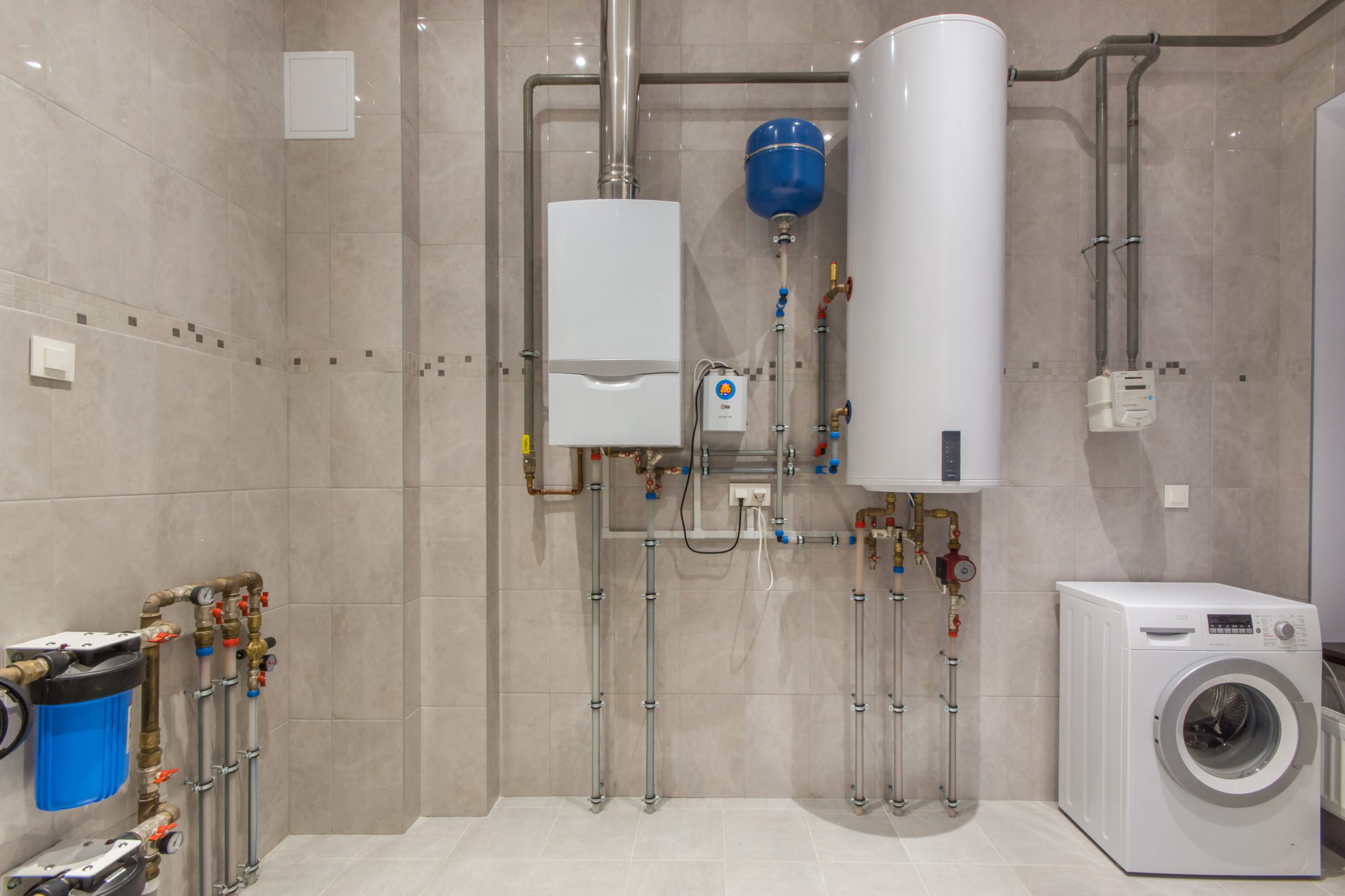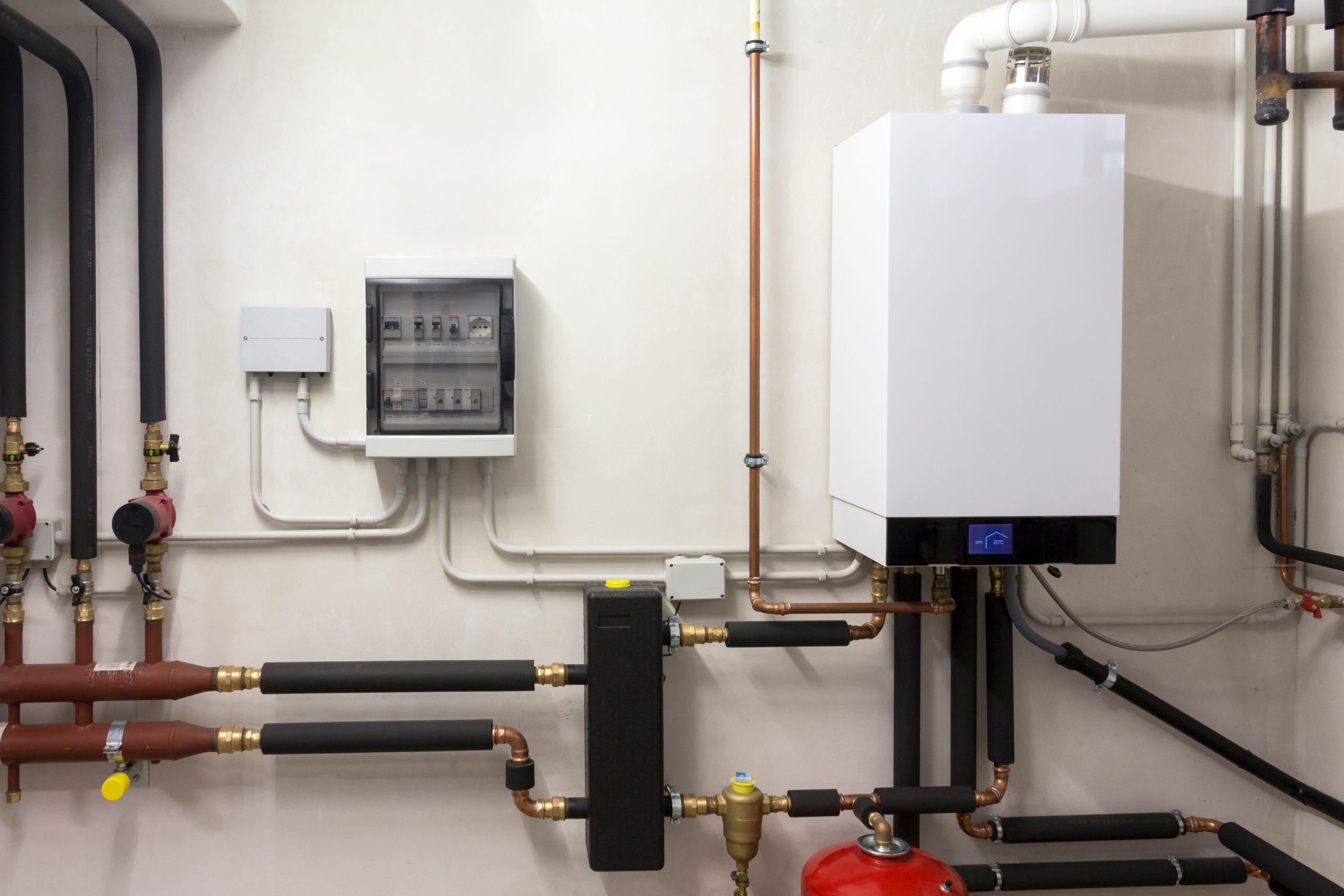
A boiler room is as the name suggests a small room, within your property, where the boiler, furnace or HVAC (Heating Ventilation and Air conditioning) equipment can be found. Boilers are commonly used in UK homes for providing hot water and heating. Many properties have a central heating system that consists of a boiler, piping and radiators. The boiler heats the water which then passes through the pipes to the radiators. The heat passes through the radiators via convection currents into the air and heats the room. The water makes a circuit around the central heating system until it is back at the boiler again. This kind of system is known as a closed system. Properties with closed heating systems require a second appliance in order to heat water for consumption and personal use. This is usually a hot water heater, that heats the water that comes out of your taps, whilst the boiler heats hot water for the heating of the home. Boilers and water heaters are typically found, out of the way, in the boiler room.

Boilers and boiler rooms, if you have one, are typically found in the basement of your home. They can be installed elsewhere but there are several reasons why basements are the perfect location to have a boiler.
10 Benefits of having your boiler room in the basement.
-
Out of sight
Installing your boiler in the basement means that it is out of sight from the main living area of the house. Boilers and all the associated pipework and connections are fairly unsightly and not something that you would want to have on show. In the basement, you don’t have to worry about pipes and connections ruining your decor.
-
No strange noises
Your boiler will from time to time make noises, as will the pipes, having the boiler neatly down in the basement means that any strange or loud noises will be masked.
-
Good proximity and access for connecting pipework
The basement is in close vicinity to all the pipework entering and leaving your property, having the boiler in the basement means that there is good access for connecting it to the hot and cold water pipework.
-
Good proximity to gas supply
As well as the pipework, other things that are needed are in close proximity like the gas supply.
-
Easy to supply power
It is straightforward to install electrical outlets in the basement if you do not already have them.
-
Proximity to an external wall
When a boiler is installed there has to be an outside wall nearby, so that the vents, chimneys and other outlets can be installed.
-
Pipe Discharging
Both the flue and waste pipe have to be discharged outside. Being in the basement gives easy access to the outside, via the exterior walls.
-
Easy access to the soil stack.
The pipework from the boiler has to be discharged into a soil stack. This is a drainage pipe that passes through the property and connects to horizontal offsets. Each soil stack terminates in a stack vent that leads to the outside.
-
Space for installation
There is lots of space to install the boiler and all the associated pipework, and if your boiler requires repair there is plenty of room for the engineers to inspect the boiler and move about.
-
Basements don’t typically freeze,
Basements don’t typically freeze, so housing your boiler in your basement ensures that you don’t have to worry about frozen pipes and boiler damage over the winter months.
So, you’ve had 10 reasons why the basement is a good idea for a boiler room, but are there any regulations that need to be followed? Does boiler room need ventilation? Where should a room thermostat be located? Yes, boilers need to have ventilation and the room thermostat should be placed next to the door. There are also several regulations that need to be followed no matter where you decide to locate your boiler room, or boiler.

Regulations that must be followed when installing a boiler in a basement:
- The boiler room door must open outwards
- It must be self-closing
- The door needs to have a good fire rating
- The boiler room must be enclosed and not have any windows or gaps present
- The boiler has to be wrapped in fire-rated material
- Fresh air vents must bring in air directly from the outside
- The boiler must be placed either on a concrete floor or on concrete blocks
- Any pipes that will carry hot water have to be isolated and have isolation valves
- There must be a clearly labelled emergency switch by the stairs up from the basement, or by the exit door.
What If My Property Doesn’t Have A Basement?
Traditionally, if a property doesn’t have a basement the majority of boilers are installed near the bathroom or kitchen. In this case, the boiler room is known as an airing cupboard, it is typically found outside the bathroom upstairs on the landing, or in the kitchen. The airing cupboard is large enough to have the boiler on the bottom and then shelves are also often installed. Because of the proximity to the boiler, it’s a great place to dry clothes or store towels. Having the boiler located close to the bathroom makes sense on many levels, it is close to one of the rooms that use hot water, so the water doesn’t have far to go for where it is needed. In addition, all of the necessary pipework can be placed next to the bathroom pipework, and the boiler’s condensate pipe and waste pipe can be connected to the bathroom’s waste pipe.
If you are interested in installing a boiler, or boiler room in your basement call BNS today, our expert plumbers will be able to explain all of your options to you and answer any questions that you may have.

